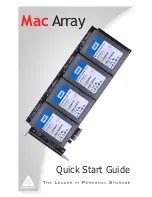
4 Commissioning
4.6 EtherCAT principle
DX-NET-ETHERCAT-2
01/14 MN040009EN
www.eaton.com
29
4.6 EtherCAT principle
The EtherCAT protocol is specifically optimized for the transmission of
process data and uses Ethernet as its transmission medium. The EtherCAT
protocol also has its own EtherType, meaning that EtherCAT data can be
transported directly inside standard Ethernet frames. In fact, this
transmission method will always be selected if all bus nodes are found on
the same subnet.
An EtherCAT frame can be made up of multiple subframes. Each one of
these subframes will serve a specific memory area in the logical process
image, which in turn can have a maximum size of 4 GB. The data sequence
will be independent of the physical order of the nodes on the network. Unlike
the method normally used with other Ethernet systems, Ethernet data
packets in EtherCAT networks are not received at every single node in order
to be interpreted and then have the process data be copied. Instead, output
data is taken from the frame and input data is added to it in a single run
through the EtherCAT network. More specifically, the slaves on the network
will take any data meant for them as the frame passes through them.
Likewise, they will insert input data into the frame as it passes through. This
process only delays frames by a few nanoseconds. Since an Ethernet frame
will include the data for a large number of nodes both in the transmission and
reception directions, this means that the payload data content will increase
to more than 90 %. Used in conjunction with 100BASE-TX‘s full-duplex
mode, this method makes it possible to achieve effective data rates of
almost 200 Mbit/s.
4.7 CoE protocol
The EtherCAT fieldbus system uses the CoE (CANopen over EtherCAT)
transmission protocol.
Meanwhile, user protocols are tunneled through an EtherCAT data channel.
By using the CoE protocol, EtherCAT provides the exact same commu-
nication mechanisms that are available through CANopen (e.g., object
dictionary, PDO mapping, and SDOs). In addition, the network management
mechanisms are similar. This means that it is relatively easy to implement
EtherCAT on devices equipped with CANopen, as a large part of the
CANopen firmware can be reused directly.
When using the CoE protocol, two transfer methods are used for the various
CANopen transfer methods:
•
Mailbox frame protocol
for transmitting acyclic data
•
Process data frame protocol
for transmitting cyclic data
The mailbox frame protocol is used to transmit the SDOs defined in
CANopen. In EtherCAT systems, these SDOs are transmitted in SDO
frames. Meanwhile, the process data frame protocol is used to transmit the
PDOs defined in CANopen for transferring cyclic data. In EtherCAT systems,
these PDOs are transmitted in PDO frames. This means that PDOs and
SDOs can be used the same way they are used with the CANopen
communications protocol.
Содержание PowerXL DX-NET-ETHERCAT-2
Страница 4: ...II ...
Страница 20: ...2 Engineering 2 2 LED indicators 16 DX NET ETHERCAT 2 01 14 MN040009EN www eaton com ...
Страница 28: ...3 Installation 3 7 Install field bus 24 DX NET ETHERCAT 2 01 14 MN040009EN www eaton com ...
Страница 54: ...4 Commissioning 4 12 CoE communication objects 50 DX NET ETHERCAT 2 01 14 MN040009EN www eaton com ...
















































